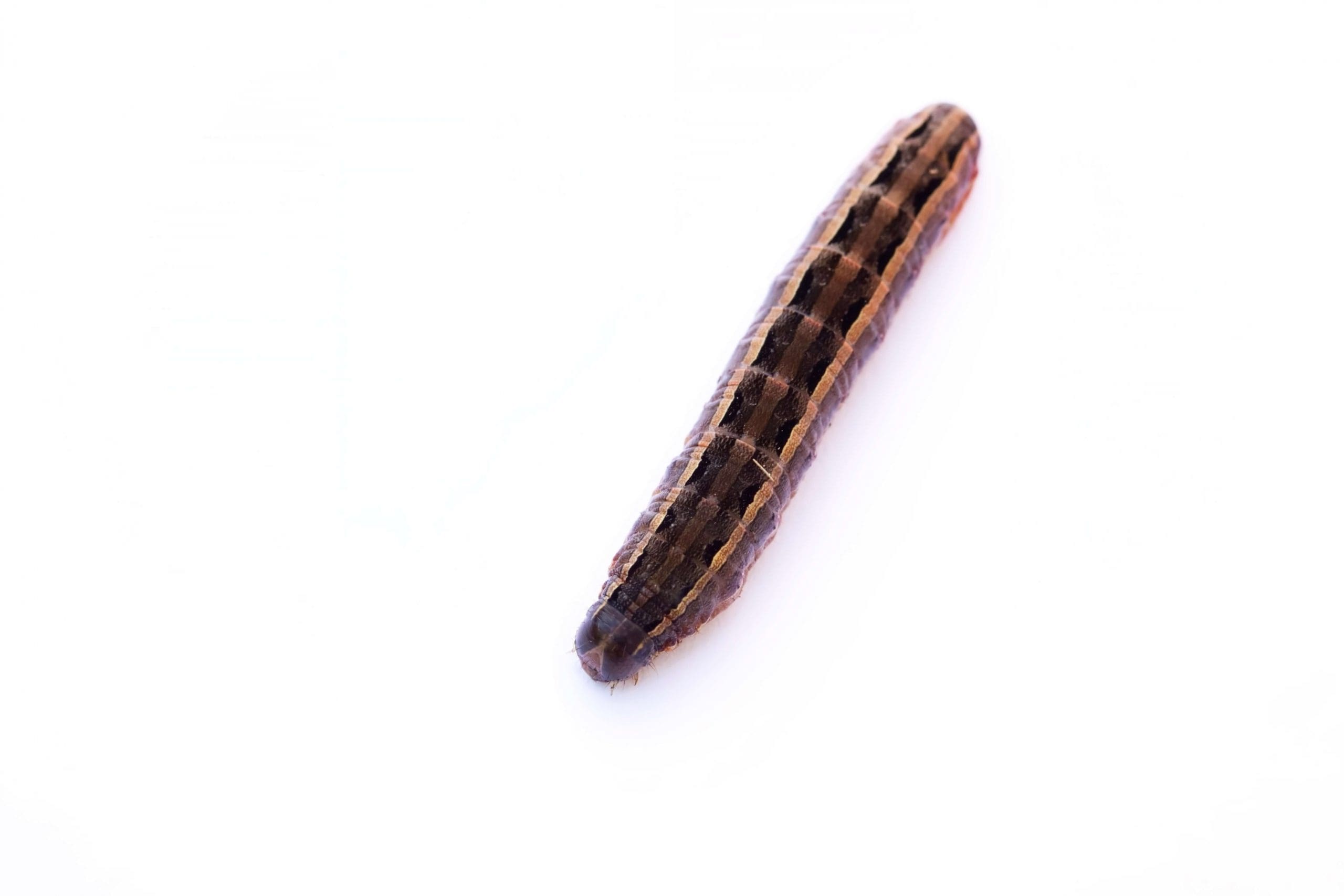
Sponsored Content
Fall armyworms are stout-bodied, hairless, striped caterpillars that feed on grass foliage in turf and crops. While Fall armyworms are more often associated with agricultural crops but they can be quite damaging to turfgrasses as well.
Host grass species include Poa spp., bermudagrass, ryegrass, fescue, bluegrass, and Johnson grass. Lawn care operators are rightfully concerned about Fall armyworms when they seemingly appear overnight in very large numbers and damage turf.
Fall armyworms typically overwinter as pupae and then emerge as adults before migrating northward as temperatures warm up during spring and summer. In mid-summer, female moths lay up to 1,000 eggs in a cluster and these hatch within a week.
The new caterpillars feed voraciously during day or night. If populations are large enough the caterpillars can decimate all foliar tissue in an area and crawl in “armies” to nearby turf stands. These armies will create a distinctive line of demarcation between damaged and undamaged turf. Newly installed turf tends to be more attractive than established turf, though these pests will attack either.
Fall armyworms can be more difficult to control compared to other caterpillar pests like cutworms. The former tends to feed in groups and when food is scarce, they will attack other hosts indiscriminately.
After fall armyworms have fed sufficiently, they will burrow into the soil to pupate, making it more difficult for insecticides to reach them. Additionally, because Fall armyworms occur sporadically, preventive insecticide treatments are not generally appropriate. Unnecessary applications of insecticide can also impact natural enemies that otherwise would help keep armyworm populations in check.
Thus, it is better to control armyworms using strategic spot treatments or on an as needed basis. When monitoring for their presence, one should look for skeletonized or chewed leaves, piles of frass, or the presence of the worms directly. The presence of birds in a turf area may also be an indicator of Fall armyworm presence.
Talstar applications provide excellent control of Fall armyworm at low application rates. Talstar® sprayable formulations (Talstar® Professional Insecticide and Talstar® Select Insecticide) should be applied at 0.25 oz./1,000 sq ft for low cut turf. To ensure optimal control with sprayable formulations, delay watering (irrigation) or mowing for 24 hours after application.
If the grass is being maintained at a mowing height greater than 1 inch or the pest pressure is high, apply Talstar® Professional Insecticide or Talstar® Select Insecticide at 0.5 oz/1,000 sq ft. Talstar® granular formulations (Talstar® PL granular insecticide, Talstar® XTRA Granular Insecticide Featuring Verge™ Granule Technology) should be applied at 1.15 lb/1,000 sq. ft. and the treated area should be irrigated with up to 0.1 inches of water immediately after application. Continue to monitor after application as up to 5 generations of armyworms may occur in one season.
Written by Dr. Rakim Turnipseed, Insecticide Product Development Manager, with FMC Professional Solutions
Created in partnership with the experts at FMC True Champions.

